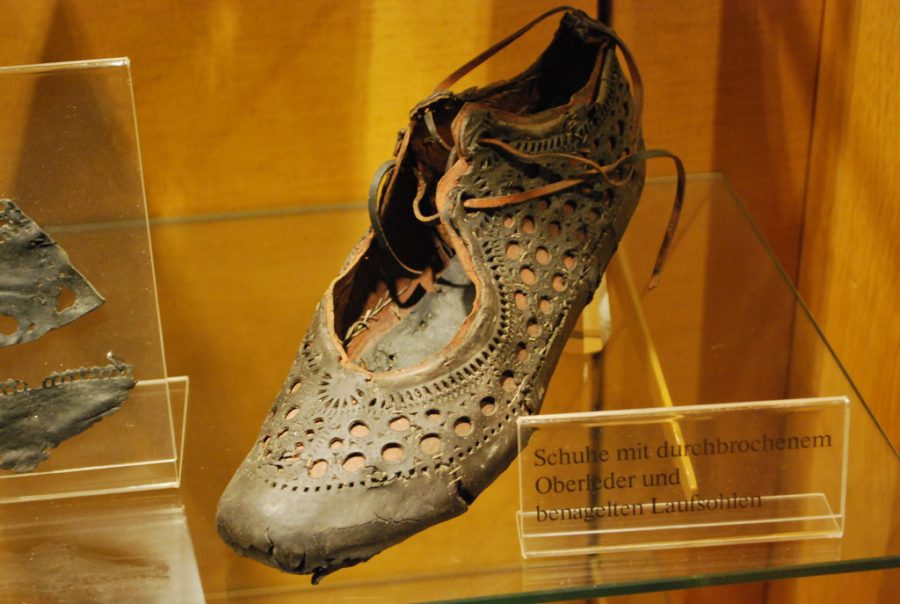
When the Romans pushed their way north into the German provinces, they built (circa 90 AD) The Saalburg, a fort that protected the boundary between the Roman Empire and the Germanic tribal territories. At its peak, 2,000 people lived in the fort and the attached village. It remained active until around 260 AD.
Somewhere during the 19th century, The Saalburg was rediscovered and excavated, then later fully reconstructed. It’s now a UNESCO World Heritage site and houses the Saalburg Museum, which contains many Roman relics, including a 2,000 year old shoe, apparently found in a local well.
If you think the Italians have mastered the craft of making shoes, well, they don’t have much on their ancestors. According to the site Romans Across Europe, the Romans “were the originators of the entire-foot-encasing shoe.” The site continues:
There was a wide variety of shoes and sandals for men and women. Most were constructed like military caligae, with a one-piece upper nailed between layers of the sole. Many had large open-work areas made by cutting or punching circles, triangles, squares, ovals, etc. in rows or grid-like patterns. Others were more enclosed, having only holes for the laces. Some very dainty women’s and children’s shoes still had thick nailed soles.
The image above, which puts all of the Roman’s shoe-making skill on display, comes to us via Reddit and imgur.
Note: An earlier version of this post appeared on our site in July 2016.
If you would like to sign up for Open Culture’s free email newsletter, please find it here. It’s a great way to see our new posts, all bundled in one email, each day.
If you would like to support the mission of Open Culture, consider making a donation to our site. It’s hard to rely 100% on ads, and your contributions will help us continue providing the best free cultural and educational materials to learners everywhere. You can contribute through PayPal, Patreon, and Venmo (@openculture). Thanks!
Related Content:
A Huge Scale Model Showing Ancient Rome at Its Architectural Peak (Built Between 1933 and 1937)
A Map Showing How the Ancient Romans Envisioned the World in 40 AD
Rome Reborn: Take a Virtual Tour of Ancient Rome, Circa 320 C.E.
Free Courses in Ancient History, Literature & Philosophy
Animation Gives You a Glimpse of What Life Was Like for Teenagers in Ancient Rome
The History of Rome in 179 Podcasts


Now I remember. Some ants were crawling on my foot so I took my shoe off to scratch my foot. I laid the shoe on the well at the same time some locals raided our fort.
After the fight I went back to the well and the shoe was gone.
Could someone email me instructions on how to get it back?
Dear Mr. Pretorius,
I must confess that it was I who found your 👞 at the well. Seeing only one shoe, I erroneously assumed that either the other 👞 or its owner had fallen into the well. I looked down into the water and did not see a distressed 😫 person or a floating body and so I decided to not let a fine 👞 go to waste.
The 👞 seemed hardly worn and I knew that my dog, Bosco, would enjoy using it To play with. I’m afraid that as joyful as Bosco was with his new toy, your poor 👞 did not survive the play time with my dog, although he seemed to be having fun
the whole time that Bosco was flinging him into the air and prancing him around the house on his nose. I apologize for the error of my decision and hope that you will take better care of your shoe next time. Mistakenly, Ani
I believe the quotation at the end incomplete. It should be “The Romans were the originators of the entire-foot-encasing shoe to the Mediterranean world. ” because shoes were found in Asia as far back as 3,000 years ago with archaeological digs to prove.